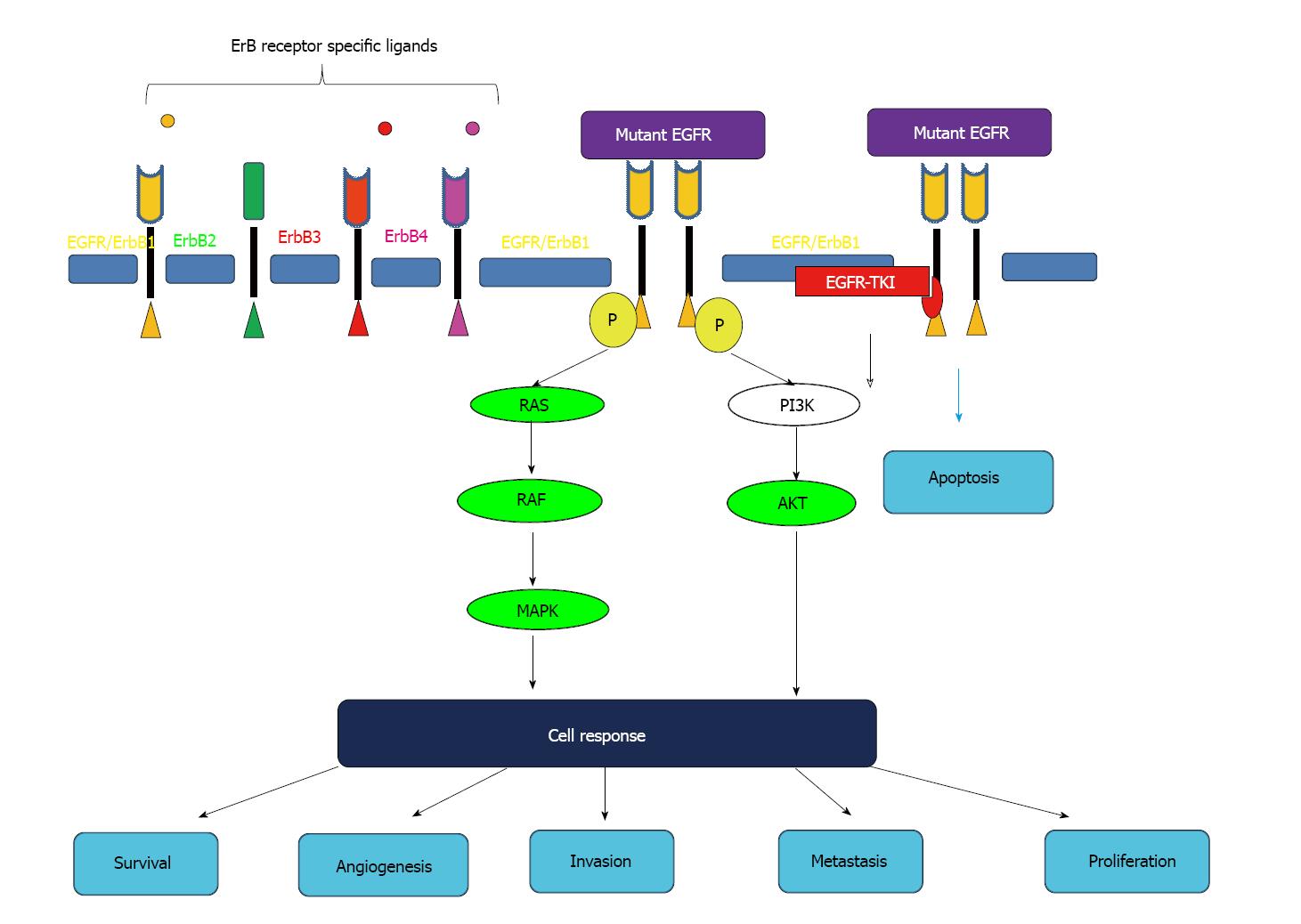Copyright
©2014 Baishideng Publishing Group Inc.
World J Clin Oncol. Oct 10, 2014; 5(4): 646-659
Published online Oct 10, 2014. doi: 10.5306/wjco.v5.i4.646
Published online Oct 10, 2014. doi: 10.5306/wjco.v5.i4.646
Figure 1 Cell-proliferative signaling pathways in lung cancer cell.
The epidermal growth factor receptor (EGFR) family consists of 4 members: EGFR/ErbB1, ErbB2, ErbB3 and ErbB4. Specific ligands (e.g., EGF, TGF-α) binding to EGFR results in a conformational change of the receptor, exposing the dimerization domain and allowing for homodimerization with a second EGFR, or heterodimerization with another member of the EGFR family. Activation of the EGFR results in autophosphorylation of key tyrosine residues. These tyrosine phosphorylated sites leads to the activation of major downstream signaling cascades, including the Ras/Raf/MAPK pathway and PI3K/AKT pathway. These pathways act in a coordinated manner to promote cell survival. While wild type EGFR is activated in a ligand-dependent manner, mutant EGFR is constitutively activated. First- or second-generation EGFR-TKIs bind reversibly or irreversibly to the kinase domain and effectively inhibit EGFR tyrosine kinase by binding to the adenosine triphosphate-binding site of the enzyme and inhibit downstream signaling, leading to apoptosis of cancer cells.
- Citation: Asami K, Atagi S. Epidermal growth factor receptor tyrosine kinase inhibitors for non-small cell lung cancer. World J Clin Oncol 2014; 5(4): 646-659
- URL: https://www.wjgnet.com/2218-4333/full/v5/i4/646.htm
- DOI: https://dx.doi.org/10.5306/wjco.v5.i4.646









